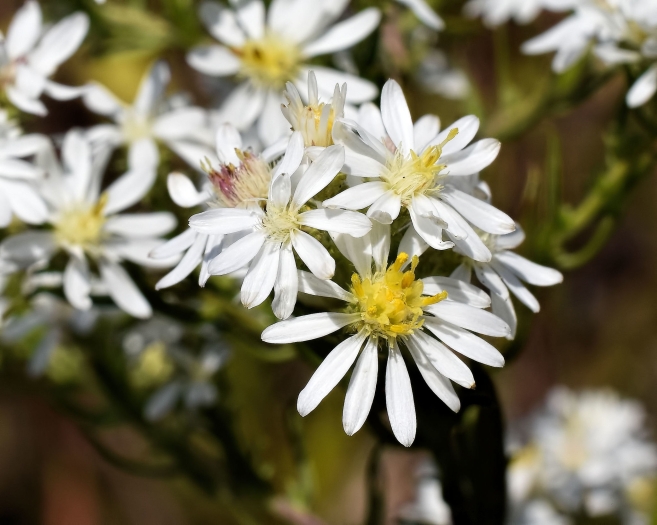White Heath Aster
(Symphyotrichum ericoides)
White Heath Aster (Symphyotrichum ericoides)
/
/

davecz2
CC BY-SA 4.0






















































Estimated Native Range
Summary
White Heath Aster is valued for its late-season blooms and ability to thrive in poor soils, making it a popular choice for wildflower gardens, naturalized areas, and restoration projects. It is drought-tolerant once established and can handle a range of soil types, although it prefers well-drained conditions. Full sun is ideal for optimal flowering, but it can tolerate light shade. While it is not known for major diseases or pests, powdery mildew can sometimes be an issue in humid conditions. This species can be aggressive in garden settings, spreading by rhizomes and self-seeding, which should be considered when planting.CC BY-SA 4.0
Plant Description
- Plant Type: Herb
- Height: 1-3 feet
- Width: 1-1.5 feet
- Growth Rate: Moderate
- Flower Color: White
- Flowering Season: Summer, Fall
- Leaf Retention: Deciduous
Growth Requirements
- Sun: Full Sun
- Water: Low, Medium
- Drainage: Fast, Medium, Slow
Common Uses
Bee Garden, Bird Garden, Border Plant, Butterfly Garden, Deer Resistant, Drought Tolerant, Erosion Control, Groundcover, Low Maintenance, Potted Plant, Rock Garden, Salt Tolerant, Showy Flowers, Street Planting
Natural Habitat
native to a variety of habitats including prairies, dry open woods, and rocky slopes in the United States and southern Canada
Other Names
Common Names: Heath Aster, Frost Aster, Aster Éricoïde, Ljungaster
Scientific Names: , Symphyotrichum ericoides, Aster ericoides, Symphyotrichum ericoides subsp. ericoides, Aster pilosus, Aster tenuifolius, Aster pauciflorus, Aster multiflorus, Symphyotrichum ericoides var. prostratum, Virgulus ericoides
GBIF Accepted Name: Symphyotrichum ericoides (L.) G.L.Nesom